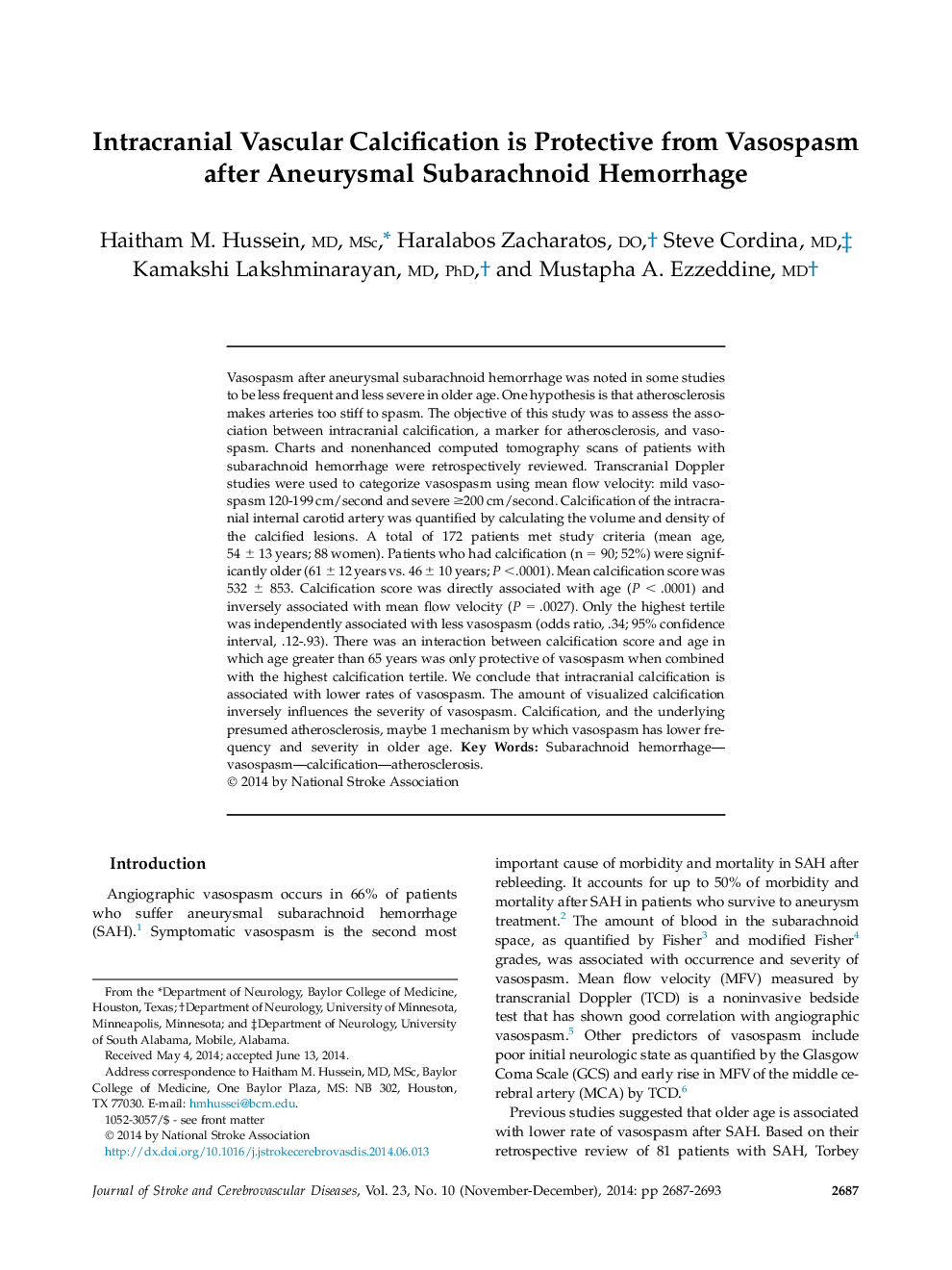| کد مقاله | کد نشریه | سال انتشار | مقاله انگلیسی | نسخه تمام متن |
|---|---|---|---|---|
| 5874063 | 1144665 | 2014 | 7 صفحه PDF | دانلود رایگان |
Vasospasm after aneurysmal subarachnoid hemorrhage was noted in some studies to be less frequent and less severe in older age. One hypothesis is that atherosclerosis makes arteries too stiff to spasm. The objective of this study was to assess the association between intracranial calcification, a marker for atherosclerosis, and vasospasm. Charts and nonenhanced computed tomography scans of patients with subarachnoid hemorrhage were retrospectively reviewed. Transcranial Doppler studies were used to categorize vasospasm using mean flow velocity: mild vasospasm 120-199 cm/second and severe â¥200 cm/second. Calcification of the intracranial internal carotid artery was quantified by calculating the volume and density of the calcified lesions. A total of 172 patients met study criteria (mean age, 54 ± 13 years; 88 women). Patients who had calcification (n = 90; 52%) were significantly older (61 ± 12 years vs. 46 ± 10 years; P < .0001). Mean calcification score was 532 ± 853. Calcification score was directly associated with age (P < .0001) and inversely associated with mean flow velocity (P = .0027). Only the highest tertile was independently associated with less vasospasm (odds ratio, .34; 95% confidence interval, .12-.93). There was an interaction between calcification score and age in which age greater than 65 years was only protective of vasospasm when combined with the highest calcification tertile. We conclude that intracranial calcification is associated with lower rates of vasospasm. The amount of visualized calcification inversely influences the severity of vasospasm. Calcification, and the underlying presumed atherosclerosis, maybe 1 mechanism by which vasospasm has lower frequency and severity in older age.
Journal: Journal of Stroke and Cerebrovascular Diseases - Volume 23, Issue 10, NovemberâDecember 2014, Pages 2687-2693
